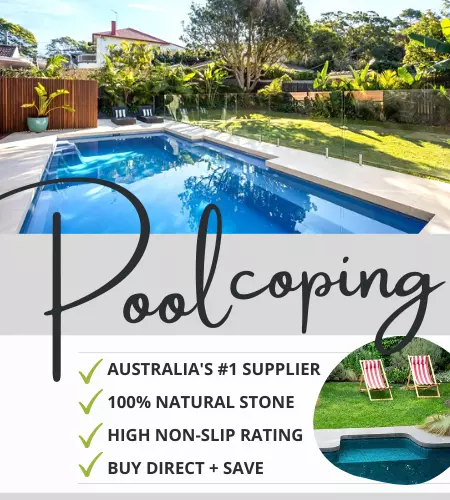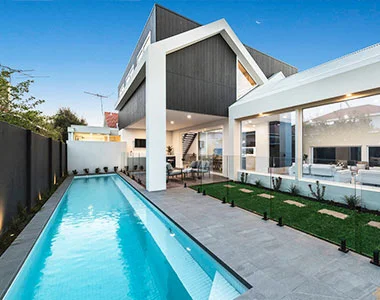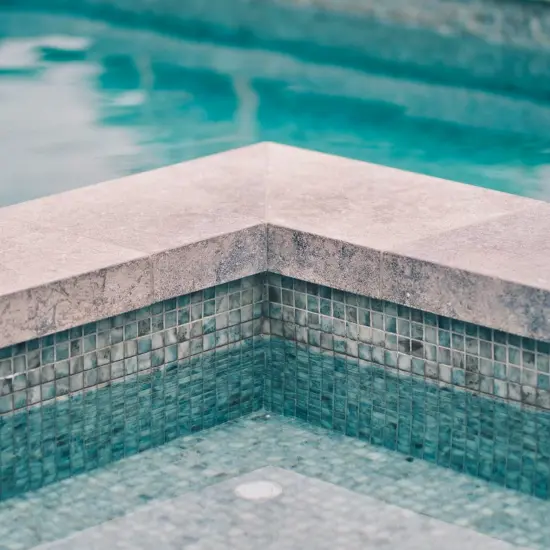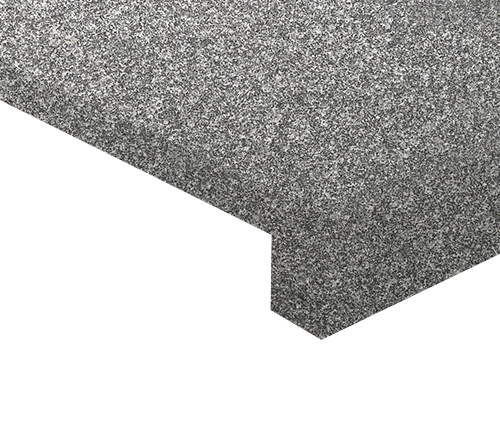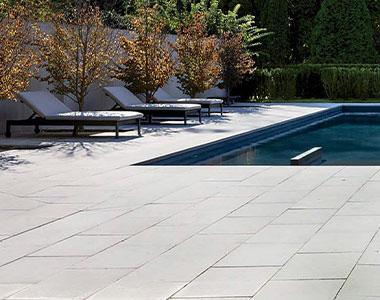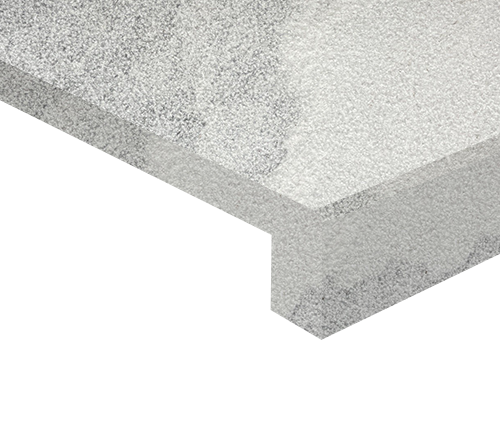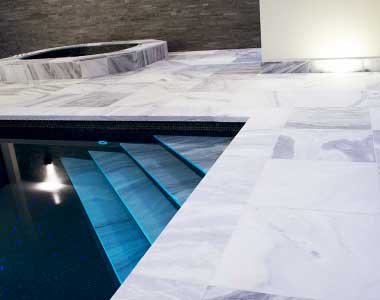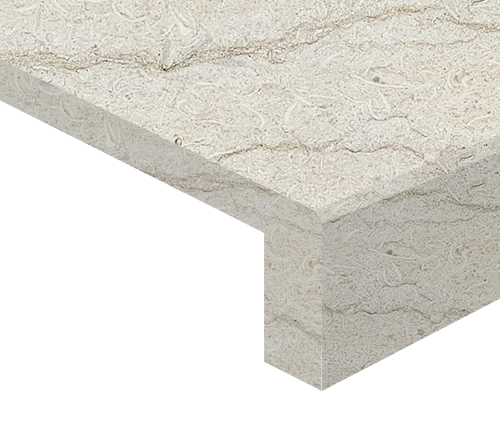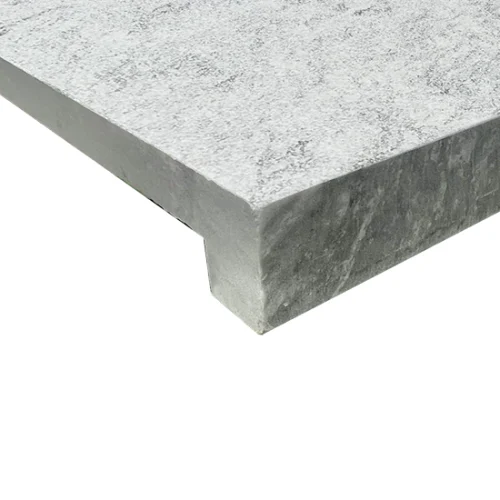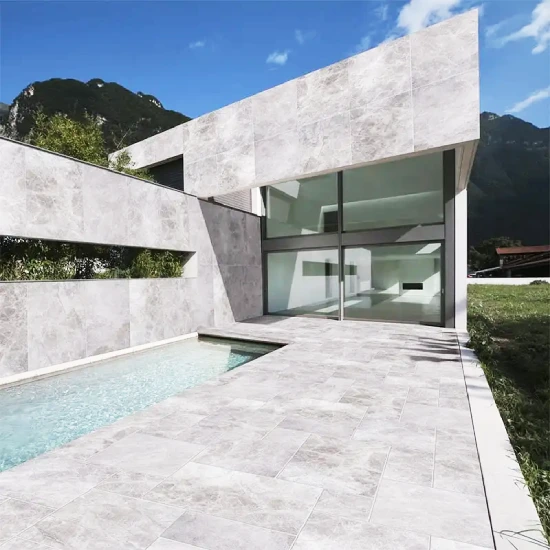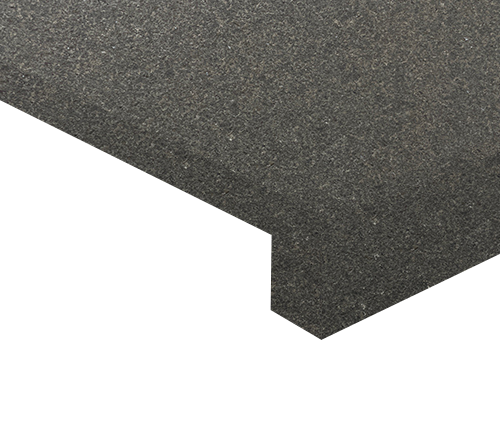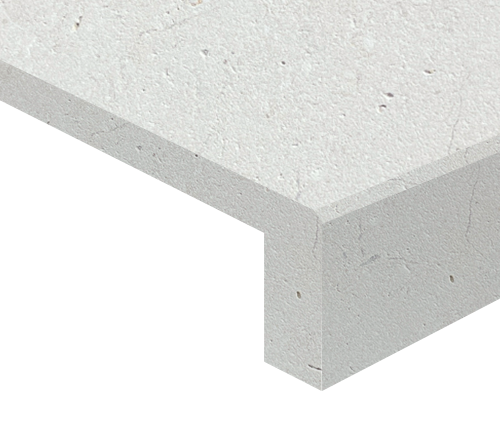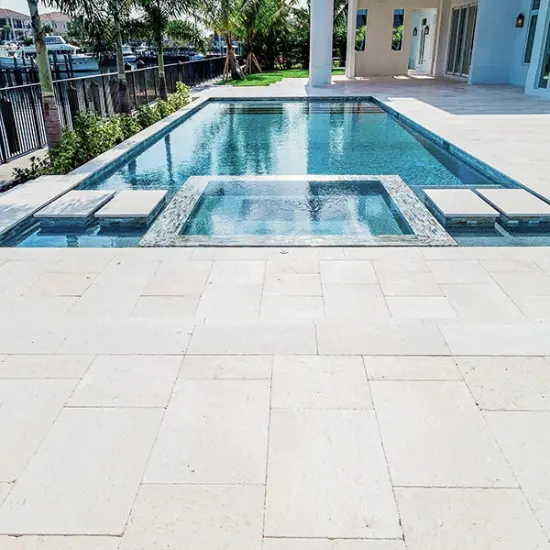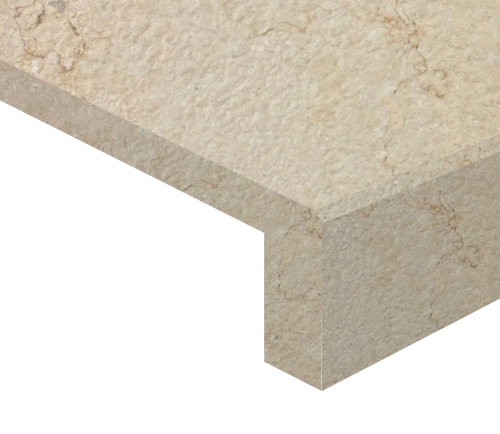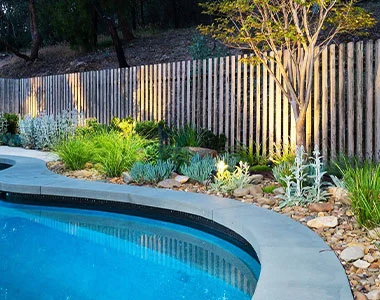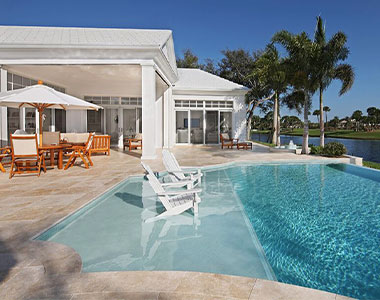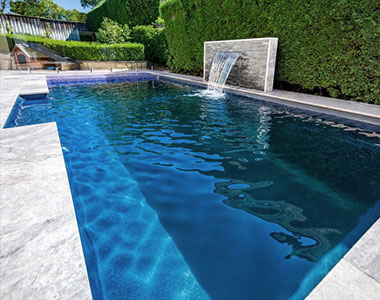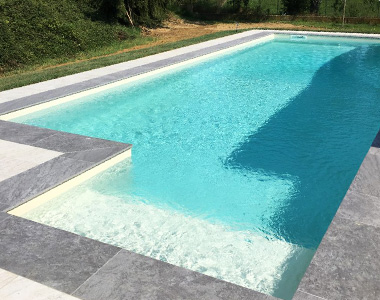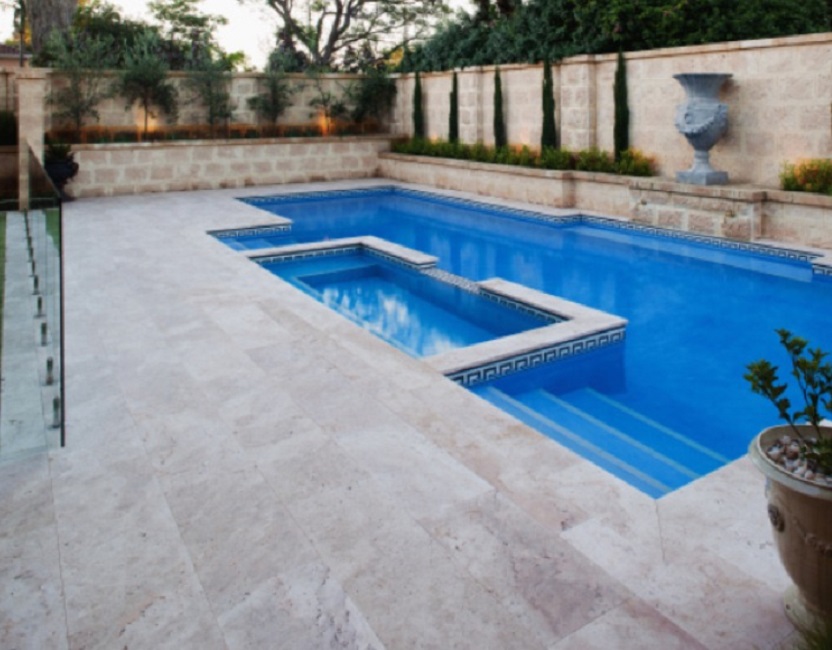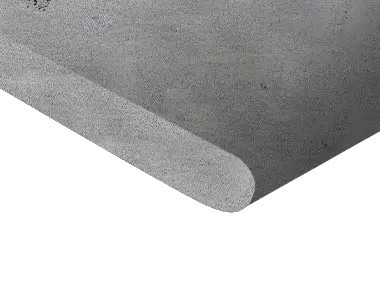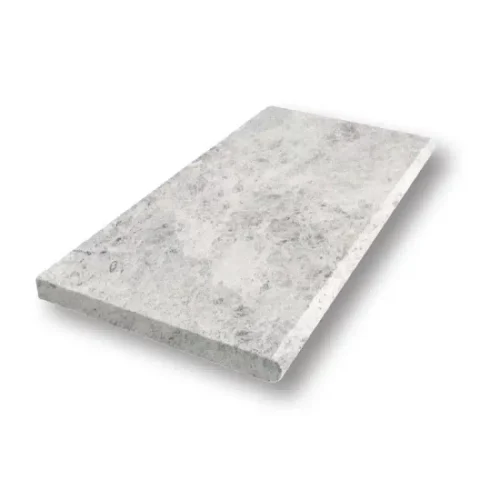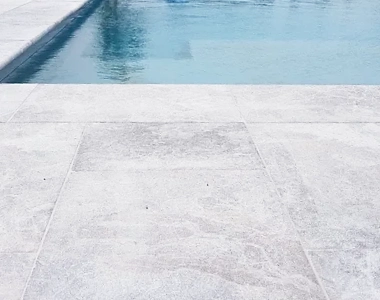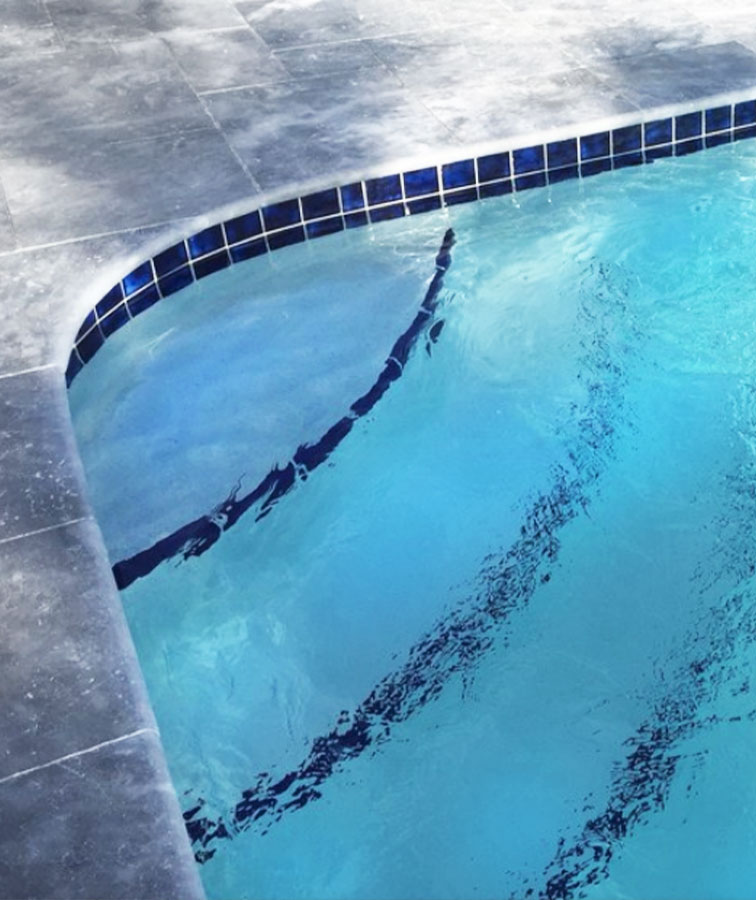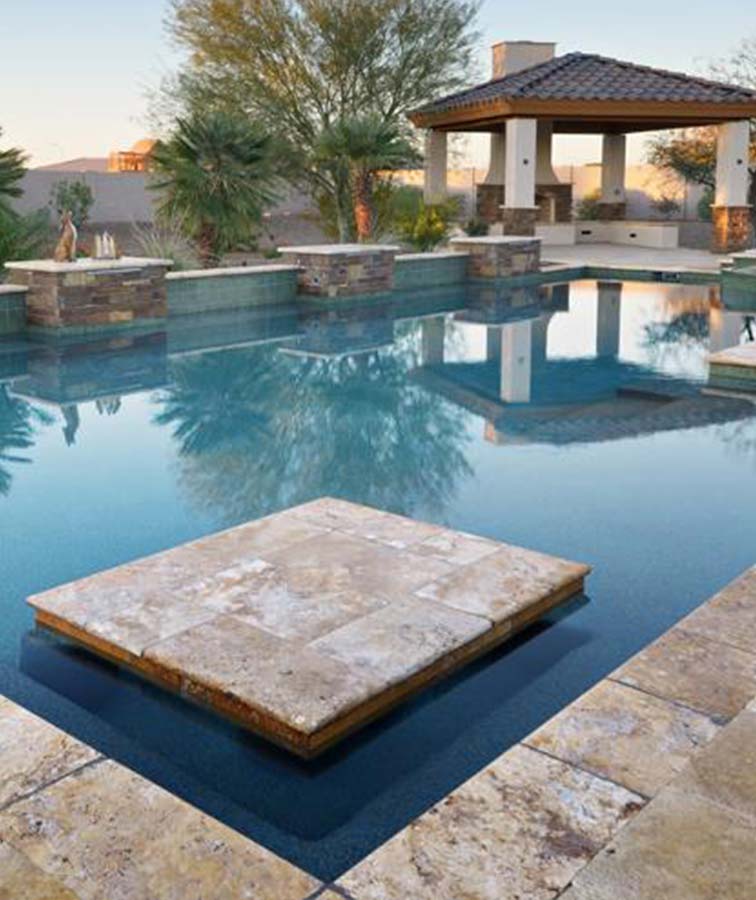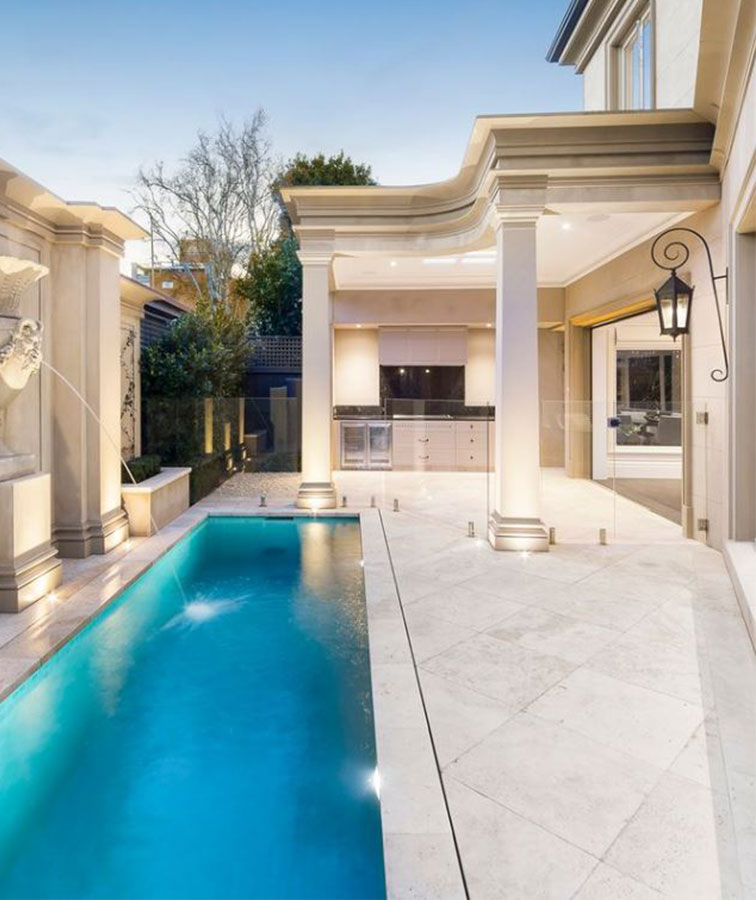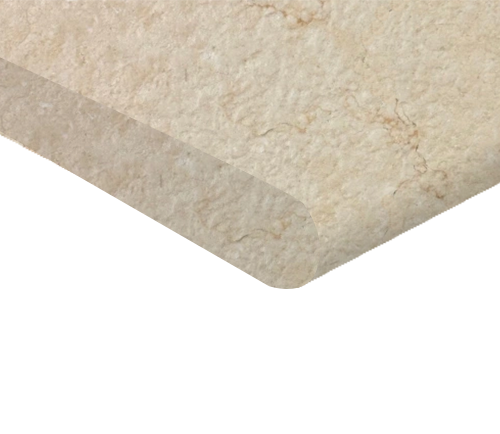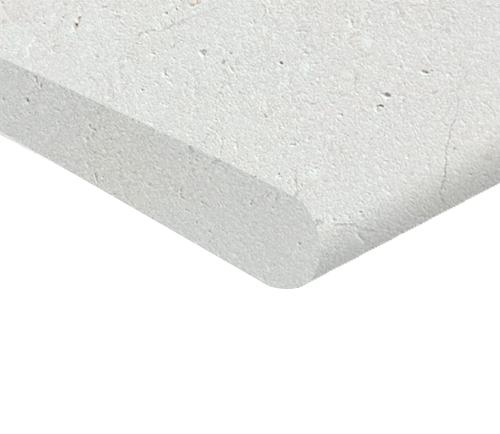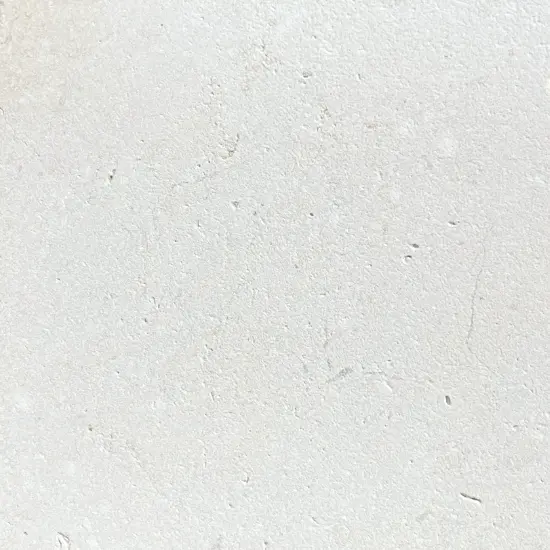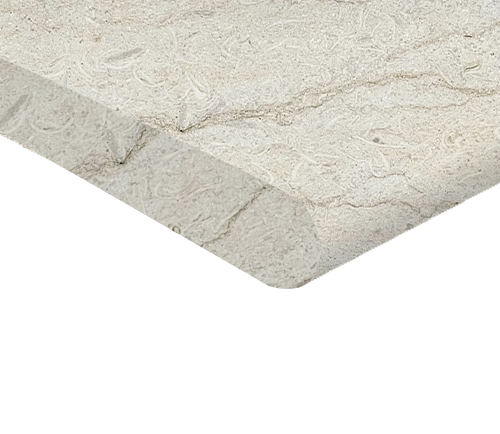Summer is the perfect time to sit by the pool with a cool drink and a good book, so fixing your stained, cracked or decaying paving is ideal so you can enjoy the heat with friends and family.
Pools are no longer just a place for a ‘quick dip’; they are now often the centrepiece of outdoor entertaining, with the surrounding paving and landscaping just as important as the pool itself.
With a wide range of natural and man-made products for use as poolside paving, so choosing the right paver is paramount to your decision to achieve your desired appearance.
Your selection process (whether it be natural or engineered stone) should include a review of the five S’s.
Stain resistance Pool Coping
Slip resistance Pool Coping Tiles
Salt tolerance Pool Coping Tiles
Strength and Durability Pool Coping
Stability and Tolerence to Salt Attack
Stain Resistance. Outdoor paving around your swimming pool can be exposed to a wide range of staining agents, such as red wine, oil from outdoor barbecues and food material, so it’s important to choose a pool paving solution that is durable and can be easily maintained. Tannin from fallen leaves and surrounding garden vegetation is also a potential source of staining.
You can reduce the risk of staining by selecting a pool paver and coping tile that has a low absorption capacity. Stains can be more conspicuous on pavers with a uniform appearance (especially mid-tones) compared to material that is more highly figured. Most types of high density limestone, travertine, granite, slate and bluestone are effective at resisting stains.
Judicious use of an oil repellent impregnating sealer around high risk areas such as barbecues can help preserve the natural beauty of your stone.
Slip Resistance. When it comes to pool coping and matching paving, safety is a priority. Our natural stone tiles contain non-slip qualities, and can also be prepared in a wide range of surface textures that are safe around a pool including sawn, grit blasted, flamed (exfoliated), and split face.
It is strongly recommended to avoid using honed and factory trilled travertine in external areas that are susceptible to moisture and getting wet, as this makes the surface quite slippery and potentially unsafe. The trapping of grime on rough textured surfaces can occur, but this can usually be handled with a hose and stiff bristled broom.
Salt Tolerance. As surrounding pool areas are often exposed to salt and chlorine, you’ll want to select an outdoor paver that can withstand these chemicals.
Resistance to salt attack can be determined by Australian standard method AS/NZS 4456.10A. The purpose of this method is to measure the weight loss of the stone after repeated immersion in a salt solution. Natural stone that is used as pool paving should have a maximum weight loss of 1%.
Granite, travertine, high density limestone and bluestone are natural stones renowned for their salt resistance. Some types of slate and sandstone are also suitable for pool paving, as well as the use of pavers with a textured finish which can hide minor surface decay.
It is also important to note that the incorrect use of sealers can lead to accelerated decay of poolside paving as it can trap salt within the stone.
StrengthIt is important that the paving has adequate strength to withstand service loads in high-traffic areas, in both dry and wet conditions. Sedimentary stone types such as sandstone and limestone can lose over 50% of its strength when wet.
Loss of strength can be accommodated in paving. For example, doubling the thickness of the paver increases the breaking load fourfould, whilst use of square paving units also reduces the risk of breakage.
Stability. Frequent wetting and drying of pavers can lead to expansion and contraction of minerals within the stone which can lead to decay. Stone types that have a high clay content or contain expansive minerals such as some volcanic sandstones may cause the stone to be dimensional unstable. Long, thin pavers are at a greater risk of warping than pavers of considerable thickness.
The inclusion of regular expansion joints at least every 4.5 metres and the use of rapid setting adhesives can reduce the risk of warping. Also, please ensure there is an active expansion joint in the pool paving between the pool beam (coping tile) and the rest of the paving. Square paving units are usually more dimensionally stable than long rectangular units. Increasing the paver’s thickness also improves its stability.
Hopefully, these selection criteria will help you in discussions with your stone merchant. When discussing your project with the supplier, it is important that you provide as much information as possible about your project. It is in your interest that the supplier fully understands what you need so they can provide you with a product that is fit for purpose. Remember the five S’s and enjoy your pool with peace of mind.
Pool coping tiles are not only functional, but also a great way to finish the look of your pool
Pool coping tiles are designed to protect the interior shell of your pool and provide a seamless finish that modernises your pool area.
They are also essential to keep your pool protected from external elements that could affect its aesthetic and structural integrity.
Pool coping tiles and pavers are quite versatile in their application, as you can use them as stone capping tiles and step treads, as a stylish addition to wall edges or flights of steps.
Our range of pool coping tiles comes in three styles: bullnose (rounded edge), drop down/drop edge, otherwise known as rebate, and arris edge (square edge).
Here at Stone & Slate Discounts, all of our pool coping are made from a single piece of stone, whereas other retailers may use two pieces of stone glued together to achieve the “drop edge” pool coping look. Our drop edge pool coping tiles are available in 40mm or 75mm drop lengths.
Bullnose pool coping tiles and pavers have a rounded edge, and help create a soft perimeter around your pool or steps. More traditional pool designs tend to opt for the bullnose pool coping style.
Arris pool coping tiles and pavers finish with a simple square edge around pool areas or when used as step treads. They have an understated elegance about them whilst providing a minimalist look.
At Stone & Slate Discounts, we ensure to stock great quality pool coping tiles, pool pavers, step treads and capping stones. We travel globally so you’re receiving great quality pool coping tiles. Also, this includes all our bluestone, travertine, sandstone and granite. Need a hand with pool coping tiles and pool pavers (or any of our other stone products)? We’re here to answer your questions Contact us
Delivery of our pool coping tiles and pool pavers is door to door in all suburbs of Melbourne, Sydney, Canberra, Brisbane, Adelaide, Hobart as well as Country towns including Albury, Shepparton, Bendigo, Wagga, Goulburn, Sunshine Coast at reasonable rates. We also express post FREE samples of our pool pavers and pool coping tiles to all our country and interstate clients.



